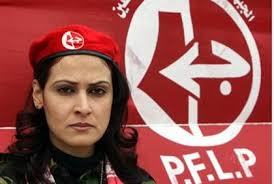 by Philip Ferguson
by Philip Ferguson
The big victory of the right-wing opposition in Venezuela along with the capitulation to the European bourgeoisie on the part of the majority of the supposedly ‘anti-capitalist’ Syriza governing party in Greece reveal yet again the limitations of a left politics focused on using capitalist parliaments and the capitalist state to carry forward fundamental, radical change. In New Zealand, however, no-one on the left has much to stand on in criticising the Chavistas or the (apparently not-so-left) left social-democrats in Greece; after all, what has the revolutionary left in New Zealand achieved in the past four decades or so?\
Most people who were active in revolutionary groups in the 1970s and afterwards have long since abandoned revolutionary politics and made peace with the form of society based on exploitation and oppression. For individuals, most especially in the imperialist world, there is always a way back into ‘mainstream’ society, successful careers in academe, law, parliamentary politics, the union bureaucracy, the state apparatus, and so on.
Nevil Gibson, the paranoid right-wing editor of the NBR was, in his wayward youth, a Marxist and early (possibly even a founding) member of the Socialist Action League. Another prominent journalist was once in the Workers Communist League. Cheryl Gywn, the inspector-general (‘public watchdog’) of the state’s snoop services (SIS, GCSB) was also in the SAL and was for some years in the 1980s a freezing worker at the Tomoana works in Hawke’s Bay and happily talks about this in interviews. Peter Conway, the last head of the CTU, was around several far-left groups in his 20s. Several ex-SAL and WCL members were MPs for the Alliance and the Greens. And on it goes. Most, however, simply dropped out of politics altogether and slipped easily into ‘civilian’ life, having families, doing DIY and their gardens in the time they once devoted to trying to overthrow capitalism.
Now. . . and then
What is left is a few tiny sects that are not even a pale reflection of the far left of the 1970s and early 1980s. Back then, the collective far left numbered in the hundreds, produced weekly and fortnightly papers that sold thousands of copies, had scores and scores of members in core industrial sectors like the freezing works, the timber industry, the car plants, electrical assembly and elsewhere. I remember in the late 1970s, when I was a full-timer on the SAL’s newspaper, that we had several thousand subscribers and that in some of the timber villages in the central North Island half the houses had subscriptions. The CPNZ, in the last stages of its Maoist period, led a massive struggle by timber workers in the central North Island for a democratic rank-and-file-controlled union against corrupt right-wing union leaders. The WCL, while also having a small industrial base, was a real force among clerical workers in Wellington.
These organisations led real mass movements of tens of thousands of people on the streets: the (more…)
 As we enter 2016, with the NZ working class in the same state of passivity that has reigned for over 20 years here now, around the world many other people continue to struggle. One of the most difficult struggles in the world is that of the Palestinian masses, stabbed in the front by the Zionist state in Israel and in the back by many Arab regimes.
As we enter 2016, with the NZ working class in the same state of passivity that has reigned for over 20 years here now, around the world many other people continue to struggle. One of the most difficult struggles in the world is that of the Palestinian masses, stabbed in the front by the Zionist state in Israel and in the back by many Arab regimes.
 by Philip Ferguson
by Philip Ferguson Ahmad Sa’adat, imprisoned Palestinian national leader and General Secretary of the Popular Front for the Liberation of Palestine (PFLP), called on all national forces to make every effort to sustain and deepen the growing intifada and support its continuation in daily life, altering the nature of the relationship between the occupation and the Palestinian people.
Ahmad Sa’adat, imprisoned Palestinian national leader and General Secretary of the Popular Front for the Liberation of Palestine (PFLP), called on all national forces to make every effort to sustain and deepen the growing intifada and support its continuation in daily life, altering the nature of the relationship between the occupation and the Palestinian people.![Palestinian protests against Israel's occupation, settlement expansion, and Al-Aqsa incursions have largely been led by students and the youth [EPA]](http://web.archive.org./web/20160212010215im_/https://rdln.files.wordpress.com/2015/11/9f7975dc3e4d4131b12c00077564641c_18.jpg?w=614&h=345)
 The following piece is taken from
The following piece is taken from 

